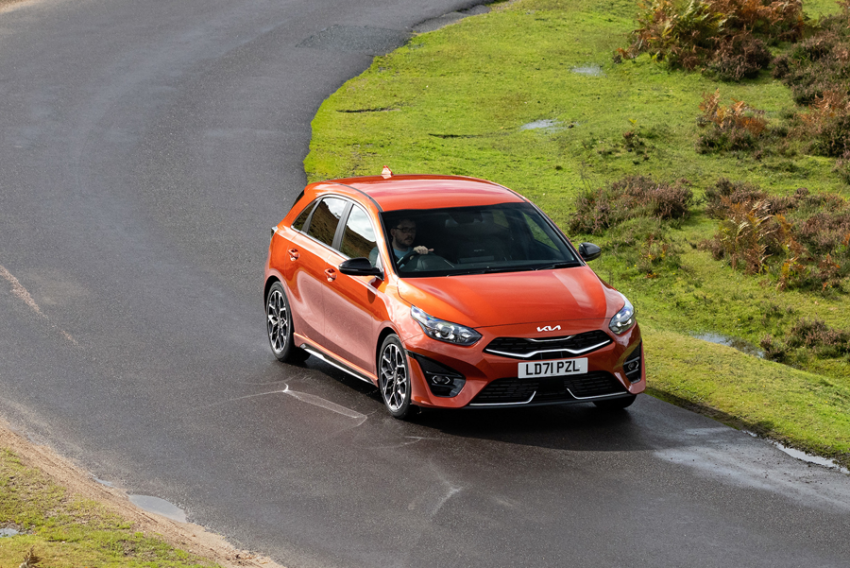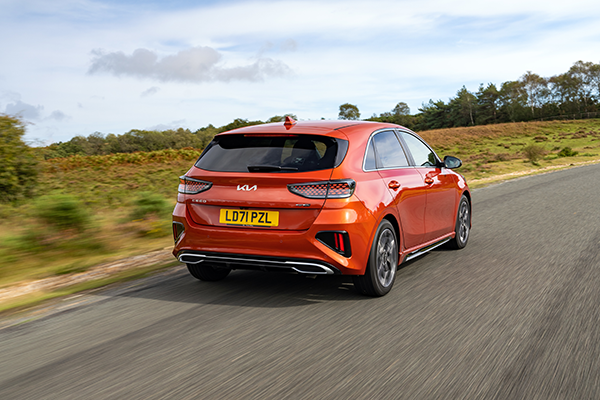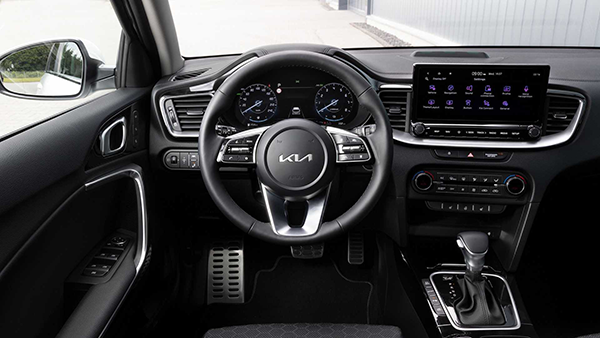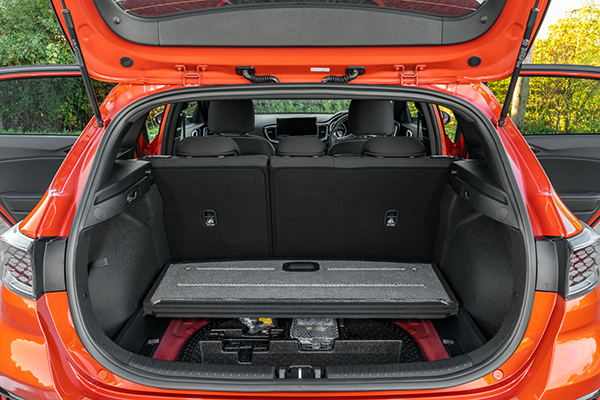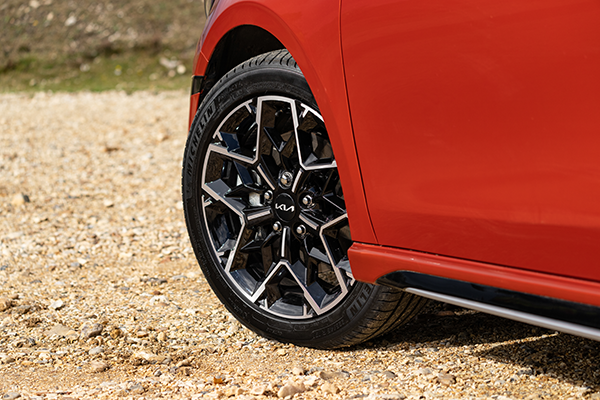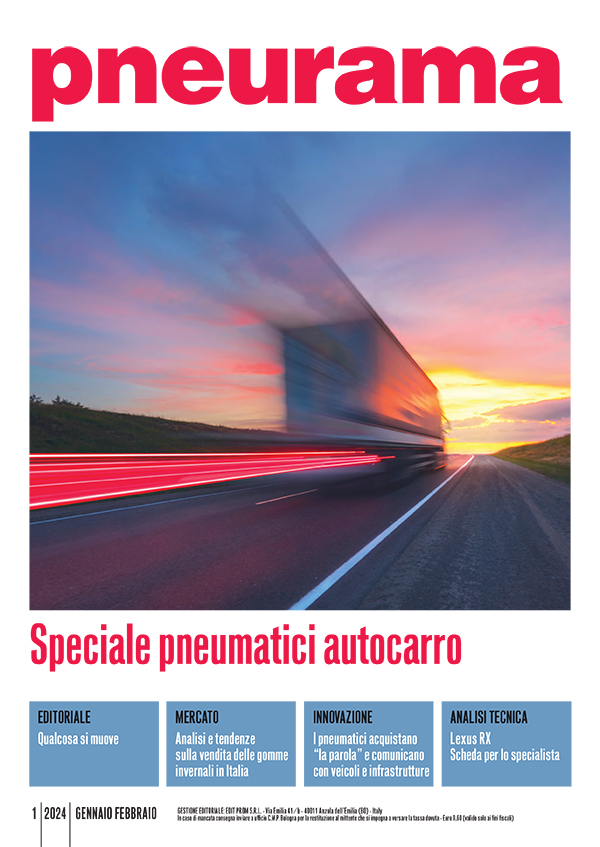European customers have always been a priority for Kia. Without any reverential fear towards the more noble and popular continental brands, the Korean manufacturer has been able to stand out in the fierce European market thanks to its quality standards, confirmed by the most recent models, with warranties extended to 7 years or 150,000 km. An ambitious goal for the veteran Ceed, which has been on the European market for 17 years and is now in its third generation. Following the company’s decision to drop the two-door version, the current Ceed is now configured as a five-door saloon - hatchback - or Sportwagon family car, even in the gritty ProCeed shooting brake version.
Between two continents
Designed for our market right from the word go by the Kia Style Centre in Frankfurt and built in the Zilina industrial complex in Slovakia, the Ceed disguises its Asian pedigree by focusing its strategy on the old continent as the name points out: Community of Europe with European Design (Ceed). Which basically means technology in step with the competition, dynamics in line with the needs and expectations of the most experienced drivers, all wrapped up in a body that respects the aesthetic principles demanded by this segment of the market. So even in its third generation, presented at the Geneva Motor Show in 2018 and lightly updated last 2022, the Ceed sharpens its claws ready to consolidate sales now close to one and a half million units.
While the dimensions are standard for a C class sedan (4.33 metres in length, a width of 1.8 metres and a height of 1.45 metres), the Ceed manages to stand out thanks to a sporty silhouette, even more emphasised by the ProCeed shooting brake version (something between a wagon and a coupè) and the more dynamic GT, at the top of the range. Wide front grilles and a sloping windscreen, with muscular looking sides that feature wheel arches able to accommodate 17 and 18-inch wheels and reduced overhangs (88 cm at the front and 79 cm at the rear) made possible by the generous 2.65 metre wheelbase, disguise its everyday car vocation. The most noticeable update can be seen in the front end, with an extreme yet stylish grille design - called “Tiger Nose” - and a few other aesthetic details, including the larger air intakes. There is no lack of full LED light clusters with integrated fog lights, honeycomb rear lights and the new format of the Kia logo, restyled and now found also inside, all of which help to freshen its visual and emotional impact. An impact that continues with an all-digital dashboard that features a 12.3-inch screen, replacing the analogue instruments found on the older versions, which simulates large circular elements in front of the driver in four selectable formats and a central 10-inch tablet-style touchscreen. From here the driver can interacts with the main on-board modes, including navigation and connectivity with the smartphone to access various functions, including remote display of the car's status.
While the petrol version has a boot capacity of 395 litres, which can be expanded to 1,291 litres by reclining the rear seat, the Ceed hybrid has a 48-volt lithium-ion battery pack concealed under the floor of the boot which takes a few inches away from the rear compartment, reducing its capacity by 38 litres. In place of the spare wheel or emergency wheel, Kia supplies only an emergency kit. The recent updates did not neglect the rich line up of Adas devices. The 2022 model, in fact, has a wide range of aids, facilitating parking, ordinary driving and possible emergency manoeuvres, anticipating the driver's reactions in many situations. The now comprehensive equipment includes systems such as High Beam Assist, Driver Attention Warning, Lane Keeping Assist with Forward Collision-Avoidance Assist, and Safe Exit Assist, which detects approaching vehicles before starting to drive.
No more diesel
Originally offered with an entry-level 100 hp petrol 1 litre three-cylinder turbo engine (with possible conversion to LPG or an alternative hybrid unit) as well as a 1.6-litre 136 bhp diesel unit, due to the company’s move towards increasingly sustainable mobility, with the 2022 restyling these options have been dropped (even though the diesel option has been kept on the Ceed Sportwagon), restricting the current Ceed hatchback range to a single Otto cycle engine, the rational 160 bhp 1.5-litre four-cylinder mild-hybrid, flanked by a sporty 204 bhp 1.6 T-GDi from the GT. Depending on the version, which delivers a maximum torque of 25.8 kgm between 1,500 and 3,500 rpm and 27 kgm between 1,500 and 4,000 rpm, the transmission is handled by a six-speed manual gearbox or a 7 speed auto dual-clutch transmission (DTC), steering wheel paddles and Drive Mode Select system to adapt engine response to one's driving style. Both versions deliver respectable speed performance and dynamics, with top speeds of 210 and 225 km/h respectively, 0-100 km/h acceleration of 8.6 and 7.4 seconds, and fuel consumption averaging 17.9 km/litre for the hybrid and 14.7 km/litre for the sporty GT. In electric mode alone, there is a claimed range of up to 65 km, and when the charge is no longer sufficient, the system automatically switches to mixed mode. Built on the new K2 platform shared with sister company Hyundai, which is the technological basis for the Korean group's current and future mid-class saloons, hybrid or full electric, the Ceed offers four independent suspensions, double anti-roll bar (reinforced on the GT) and disc brakes on all wheels, ensuring a lively yet safe driving behaviour.
Direct power-assisted steering, harder suspension, even more so on the sporty GT trim, and stability provided by independent suspension, with the classic McPherson layout at the front and a multilink at the rear, give the Ceed brilliant dynamics even on everyday journeys. Picking up the pace, especially in the Ceed GT, you can count on Electronic Stability Control (ESC) and Vehicle Stability Management (VSM) offered as standard, as well as the Torque Vectoring by Braking system for selective braking management and understeer control when cornering. While the standard equipment supplies alloy wheels and 17-inch tyres on the 160-hp 1.5 TGDI hybrid and the Sportwagon (15- and 16-inch wheels are also approved), sporty 18-inch wheels have been reserved for the top-of-the-range 204-hp 1.6 TGDI GT.
